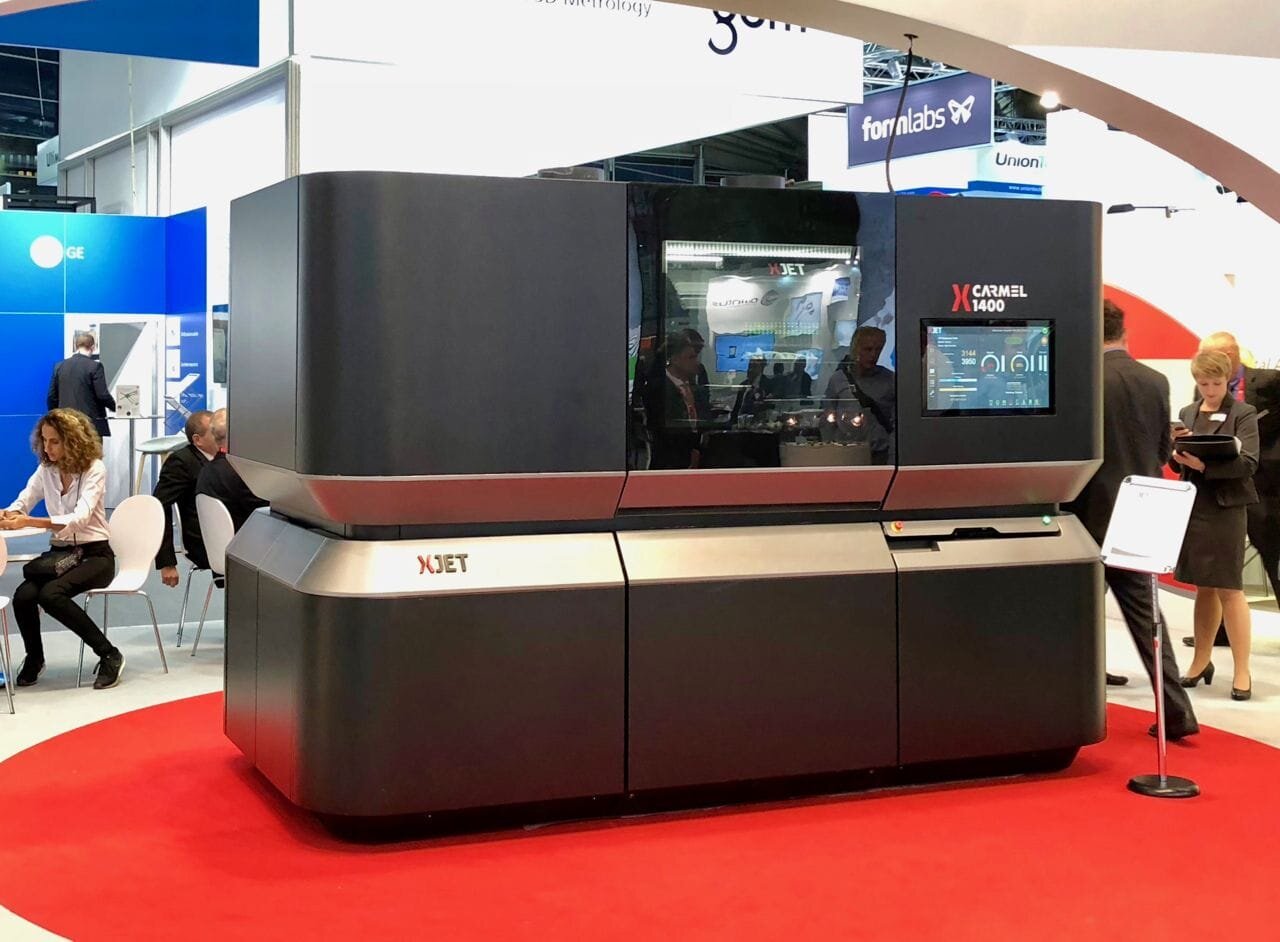![There are now two kinds of Xjet Carmel 3D printers [Source: Fabbaloo]](https://fabbaloo.com/wp-content/uploads/2020/05/image-asset_img_5eb08c9544253.jpg)
Xjet has been made a change to their line of industrial 3D printers.
The Israel-based company has been developing a line of 3D printer products based on their unusual NanoParticle Jetting 3D printing process. “NPJ” involves selectively jetting tiny droplets of liquid in flat planes. However, the secret is that the liquid is filled with nanoparticles. After printing, a post processing stage removes the binder and sinters the nanoparticles together.
Xjet NPJ Process
The NPJ process can produce parts with incredible accuracy and extremely fine details, making it ideal for many types of applications. All of the sample NPJ-produced parts I’ve seen are spectacular.
But the really interesting part of NPJ is the materials that can be 3D printed with it. Nanoparticles can be made from many kinds of materials, including metal, ceramic and even thermoplastics. Thus it is theoretically possible for NPJ equipment to 3D print all of these materials.
Commercializing NPJ
Xjet created this technology several years ago and then had to commercialize it. When I first spoke with them years ago it appeared their target was for metal 3D printing applications. This made a great deal of sense because at the time, and still today, metal 3D printing is perhaps the most profitable and fast-growing segment of the industry, mostly due to certain industries switching to additive manufacturing techniques.
As Xjet refined their systems, it turned out that they were able to certify ceramic 3D printing materials prior to metal materials. Thus their first product to hit the streets was used for ceramic production.
At the time ceramics were not Xjet’s main goal, with metal still the target. However, it seems that their initial customers found huge utility in the Xjet Carmel ceramic system. Evidently the ability to 3D print unusual ceramic geometries in fine detail is a highly desirable outcome.
Swapping Materials on Xjet Equipment?
I spoke with Xjet CEO Hanan Gothait two years ago, asking about the technical challenges of using a Carmel machine for both metal and ceramic use. Could a single machine be used for both materials? What would the troubles be in changing materials.
Gothait replied that it was possible, but would require considerable work by technicians, as the machine was not designed to swap materials by inserting a new cartridge, for example. It seems that the plumbing in the device would have to be purged of the old material. The amount of cleaning would depend on the need for purity of the new material. Gothait explained that they’d have to send an engineer out to do that change. Radical, but possible.
Two Xjet Machines
But it seems that Xjet has abandoned that notion as they have now declared two separate product lines, one for metal and one for ceramic production. These are the “C” and “M” lines, and you can guess which letter represents which material.
Apparently over time Xjet realized they could further optimize the NPJ process for metal and ceramic production, but separately. Now they say the metal machine has a somewhat different ink delivery system and different support structure, making the two products quite different and thus unable swap materials as above.
Xjet says they’ve made each machine “better for that material”.
This split makes a great deal of sense, because the 3D printed output will be of higher quality, and the likelihood of a customer wishing to 3D print both materials on the same machine is vanishingly small.
If a client has found a growing niche for unusual ceramic 3D prints, then they’ll want to 3D print as many of those as possible. Ceramic providers tend to provide ceramic products, and metal providers tend to provide metal products.
Today, we find Xjet selling both the XJet Carmel 1400C and the XJet Carmel 1400M, and there’s a good reason there are two models.
Many tech companies discover a different path as they proceed, and while some may switch to an entirely different business, here we see how Xjet shifted their product line to better match customer needs.
Via Xjet

